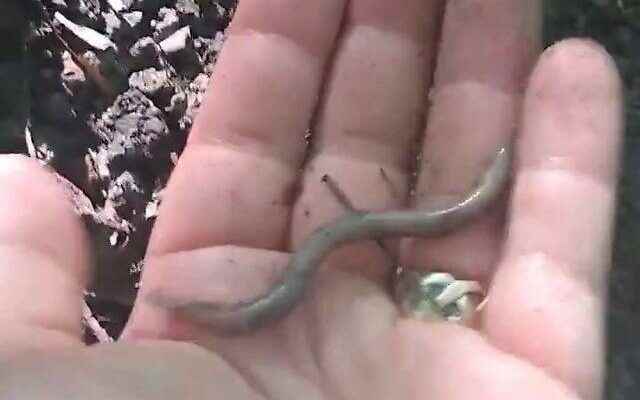The US is experiencing worm infestation shock. Amynthas agrestis type worm, also known as Asian jumping worm, snake worm or “crazy worm”, was seen in California, one of the most populated states in the USA, in recent months. The British Guardian newspaper detailed the danger posed by the insatiable worm infestation.
“CRAZY Worm” MOVED FROM EAST ASIA TO NORTH AMERICA
Native to East Asia, particularly Japan and the Korean peninsula, the earthworm has come to North America in recent years through a variety of landscape plants imported from the region. First seen in Wisconsin and the New England region in 2013, the worms have spread westward to dozens of states and were first seen in Napa, California, in July. Maybe this was the beginning of it all.
The worms, which can reach up to 20 cm in length, are distinguished by their wild movements. They are also hermaphrodites, which means they can reproduce without mating.
“THEY HAVE AN INDUSTRIAL APPROACH”
“These worms are extremely active, aggressive, and have a voracious appetite,” the California Department of Food and Agriculture (CDFA) warned in a report. Also, “true to their name, they hop when held and behave more like a threatened snake than a worm.” it said.
Invasive #jumpingworm activity is heating up in the Northeastern US Forest floor leaf litter was just about gone and casting activities causing erosion on hill slopes in areas with jumping worm activity. pic.twitter.com/5K6GGpCt8C
— Cornell SAEL (@Cornell_SAEL) August 17, 2020
But the biggest concern is the impact of worms on the environment. It was reported that jumping worms can destroy a forest ecosystem by chewing on fallen leaves and destroy the top layer of forest soil on which many plants and organisms depend.
SUGGESTIONS FROM EXPERTS
Experts suggested using a mixture of water and yellow mustard seeds on the soil to bring the worms to the surface. Another suggestion was to put them in a bag and leave them in the sun for at least 10 minutes and then throw them away. It was said that this would be enough to eliminate the worms.
Invasive Amynthas worms, aka Asian jumping worms, crazy worms, snake worms, are starting to hatch in the northeast. Video courtesy of UW–Madison Arboretum of adult Amynthas writhing in leaf litter. pic.twitter.com/z26XGZXvyY
— Steve’s Outside (@featheroutdoors) April 12, 2022
The CDFA warned that the worms “may spread through California’s forest habitat and ornamental production areas, particularly in residential and commercial areas.”
Mac Callaham, a soil expert with the Forest Service of the U.S. Department of Agriculture, said: “It wouldn’t be such a problem if the worms hadn’t spread to forests and natural areas.” said.
